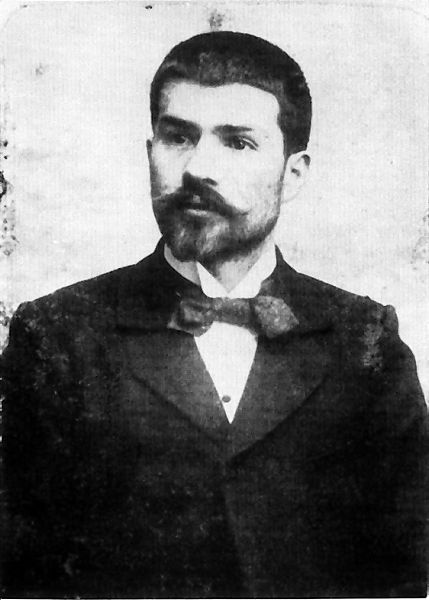Constantin Brâncuși was a Romanian sculptor, painter, and photographer who made his career in France. Considered one of the most influential sculptors of the 20th century and a pioneer of modernism, Brâncuși is called the patriarch of modern sculpture. As a child, he displayed an aptitude for carving wooden farm tools. Formal studies took him first to Bucharest, then to Munich, then to the École des Beaux-Arts in Paris from 1905 to 1907. His art emphasizes clean geometrical lines that balance forms inherent in his materials with the symbolic allusions of representational art. Brâncuși sought inspiration in non-European cultures as a source of primitive exoticism, as did Paul Gauguin, Pablo Picasso, André Derain, and others. However, other influences emerge from Romanian folk art traceable through Byzantine and Dionysian traditions.
Photograph taken by Edward Steichen in 1922
Brâncuși c. 1905
Constantin Brâncuși, Portrait of Mademoiselle Pogany [1], 1912, White marble; limestone block, Philadelphia Museum of Art, Philadelphia. Exhibited at the 1913 Armory Show
Constantin Brâncuși, 1907–08, The Kiss. Exhibited in 1913 at the Armory Show and published in the Chicago Tribune, March 25, 1913.
Gorj County is a county of Romania, in Oltenia, with its capital city at Târgu Jiu. Gorj comes from the Slavic Gor(no)-Jiu, in contrast with Dolj.
Constantin Brâncuși's Endless Column in Târgu Jiu
The Gorj county Prefecture building of the interwar period.
Wooden church in Slăvuța, Gorj County
Tudor Vladimirescu monument in Târgu Jiu



![Constantin Brâncuși, Portrait of Mademoiselle Pogany [1], 1912, White marble; limestone block, Philadelphia Museum of Art, Philadelphia. Exhibited at](https://upload.wikimedia.org/wikipedia/commons/thumb/3/39/Constantin_Brancusi%2C_Portrait_of_Mlle_Pogany%2C_1912%2C_Philadelphia_Museum_of_Modern_Art%2C_Philadelphia.jpg/463px-Constantin_Brancusi%2C_Portrait_of_Mlle_Pogany%2C_1912%2C_Philadelphia_Museum_of_Modern_Art%2C_Philadelphia.jpg)




